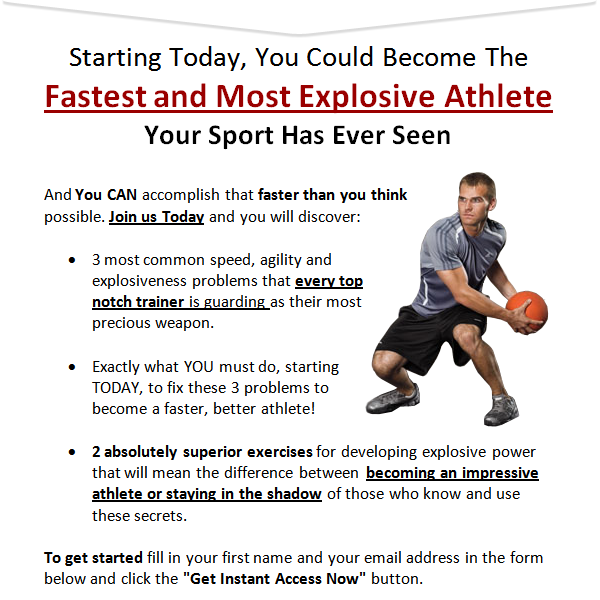The type of conditioning work you do is limited to the type of equipment you have access to. In a perfect world you would have access to many different types of equipment such as ropes, sleds, good treadmills, rowing machines, Airdyne bikes and slide boards. If you have access to this equipment, then make good use of it by programming as much interval work into your training as your body can handle. Having said that, exercise some common sense when planning your conditioning workouts. You must be physically ready for the stress that this kind of training puts on your joints. If you are unsure of your body and any weakness that might be lurking underneath the surface, you should go through a functional movement screen (FMS). It will be well worth your while to find a FMS expert who will quickly evaluate whether your body is ready to take on the kind of work you want to do.
Having determined that the type and intensity of conditioning you do depends on your physical strengths and weaknesses, as well as your fitness level, what about equipment? There are many things to consider when deciding on what equipment to use and when to use it. For most people, conditioning work usually happens at the end of a workout so the type of training performed in the workout can determine what equipment you use and how hard you train. It may also depend on where you are in your cycle of training and how you feel at the time.
Here is some great conditioning equipment with some ideas on how and when to use it:
Airdyne Bike
• Use on linear or lateral days
Timed Intervals:
• Weeks 1-4: 15 on/45 off. Start with 6 intervals and work your way up to 9 by week 4
• Weeks 4-8: 20 on/40 off. Start with 6 intervals and work your way up to 9 by week 8
• Weeks 8-12: 30 on/30 off. Start with 6 intervals and work your way up to 9 by week 12
• At the 12 week point you can start to mix in some tabata conditioning such as 40 on/20 off. This negative recovery will be very challenging.
Distance Intervals:
Distance intervals are very effective as it challenges you to see how fast you can reach your goal. If you are doing timed intervals you could add in one distance interval at the end as a sprint to the finish line as it were.
• Weeks 1-4: Perform 0.2 mile intervals with 60 sec rest in between. Start with 3 intervals and work your way up to 6 by week 4
• Weeks 4-8: Perform 0.3 mile intervals with 75 sec rest in between. Start with 3 intervals and work your way up to 6 by week 8
• Weeks 8-12: Perform 0.5 mile intervals with 120 sec rest in between. Start with 3 intervals and work your way up to 6 by week 12
Endurance:
Perform a 5 mile endurance test every 3-4 weeks and you see how fast you can do it in. You should see your results improve dramatically over the 12 week period.
Note: These methods can be applied to the Concept2 rowing machine, which is another great piece of conditioning equipment. Obviously the distances may vary but you can quickly and easily work out a nice progression if this is the preferred choice of equipment.
Treadmill Tempos
• Use on linear training days
• Set up a treadmill at 3.0 incline to simulate running outside. Most athletes will be able to start at 10 miles per hour.
• Start with a 3:1 recovery to work ratio for the first 4 weeks. From weeks 4-8 try a 2:1 recovery to work ratio and then in the final 4 weeks of the progression try a 1:1 rest to work ratio.
• Start with 8 tempos and try adding a tempo each week.
Shuttle Runs
• Use on lateral training days
• Make sure that you alternate between left and right leg at each start (i.e., Split stance facing one side and then split stance facing the other).
• Focus on pushing off the inside leg on each turn and alternate which leg you turn on as well (i.e. If you started facing right, your first turn would be left). You can get creative with this and make it specific to your sport. I play and coach cricket so I make my shuttles 20m (approximate length of a pitch) and have players run 1, 2, 3 and 4 before having a 2 min break. Start with 3 shuttles and work up to 10.
Sled Dragging or Pushing
• The sled is a great tool for developing a general conditioning baseline and improving athletic performance. Use the sled on linear training days.
• A good distance for sled pushing is between 10 and 20m
• You can perform sprints or marches. Sled marches mean you need to work at a steady pace with proper form (use heavier weight). Sprints are obviously shorter bursts so you may be moving the sled over a shorter distance as fast as you can.
• You could vary your sled work between pushing and dragging.
• Good progression may be to start with 6 trips with the sled and add one trip per week. Make sure you concentrate on maintaining good form.
Slide board
• Use the slide board on lateral training days. Slide boards are a great tool as they will help you gain lateral endurance. This is important for almost all team sport athletes as well as for sports like tennis, boxing, MMA and squash.
• Start with a 2:1 rest to work ratio with 30 sec on and 60 sec off. You can progress all the way to a negative rest to work ratio.
• Start with 6 intervals and progress by adding one per week.
• It is important when you slide board that you stay low, with hips back and keep the knees shoulder width apart not allowing them to cave in at all.





